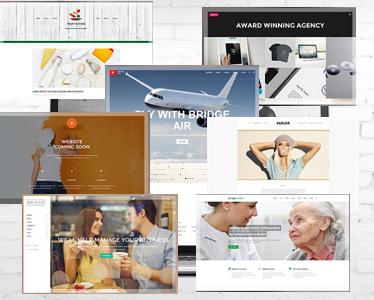I find my eyes glazing over and realize many hours have passed. I am not sure if I’ve made any progress at all. This accurately describes my early experience of shopping for a premium WordPress theme for a client. There are an incredible amount of choices out there, ThemeForest alone claims to have 5,701 WordPress Themes & Templates to choose from. So how do you choose?
First of all, you might not have to. If you are working with a designer/developer who prefers certain themes with a good track record, it’s perfectly acceptable to defer to them. You’ll want to make sure that you’ve clearly communicated your vision to them, but coming from the other side, it’s also really frustrating for both parties when a client insists on using a bad WordPress theme.
Not using a professional or want more control over the selection process? Here are a few tips to simplify the process of choosing a WordPress theme.
- Identify the primary purpose for your site. Is it to sell products, engage a membership base, actively blog, sign up people for classes and events? Many theme developers have gotten very specific about designing themes for a certain audience or need. If it’s going to be an eCommerce site, you’ll need to know that it’s compatible with the platform you will be using. For example, if you know you will be using WooCommerce, you’ll want to narrow your selection to themes that are either made for or by Woo, or advertise themselves as being Woo compatible. The same goes for other specific areas. Do make sure the themes you are considering have the capacity to do all of the other things you need your site to do, too.
 Knowing where to shop is the first step. For blog based or minimalist sites, I will often look to StudioPress and the Genesis framework. They have many child themes to choose from, and you can use it as many times as you want. Coding tends to be top notch and updated regularly. As a designer, having to buy the Genesis Framework only once is a really good deal. However, if you plan on only having one website, you’ll need to weigh the costs of both the framework and the child theme with the benefits. I also often shop on ThemeForest. While most sites are limited to one use of their license, I find the rating system and comments on their site extremely valuable.
Knowing where to shop is the first step. For blog based or minimalist sites, I will often look to StudioPress and the Genesis framework. They have many child themes to choose from, and you can use it as many times as you want. Coding tends to be top notch and updated regularly. As a designer, having to buy the Genesis Framework only once is a really good deal. However, if you plan on only having one website, you’ll need to weigh the costs of both the framework and the child theme with the benefits. I also often shop on ThemeForest. While most sites are limited to one use of their license, I find the rating system and comments on their site extremely valuable.- Do other people like using it? I will only purchase a theme if I know that’s it been well tested and is well liked in the marketplace. This means when I search on ThemeForest, I use the filter to only find sites with a 4-star ranking and above. Then I look at how long the theme’s been out and finally I go to the comment section of the theme. People aren’t shy about saying good and bad things about a theme, and it’s easy to see how responsive support is to questions. Good support is not a thing to take lightly, particularly if this is a new venture for you.
- Do you need versatility and lots of bells and whistles? As a designer, I’ve fallen in love with themes like the X theme, Avada and the Bridge theme with drag and drop type interfaces and amazing versatility. Some people find all of these extras to be overwhelming and distracting when choosing a WordPress theme, so if you don’t need it, don’t pay for it.
- Make sure the theme developer has been keeping up with WordPress upgrades. When code changes, themes can break if they aren’t constantly assessed for compatibility and updated.
- Also, make sure the demo operates the way you expect. Test out the demo on several devices and on different browsers. Unless you write code, this is something you won’t be able to easily change.
- Finally, if you still have too many really good choices, go with your gut. If you like most of the features of the theme and it closely resembles your vision, buy it.


